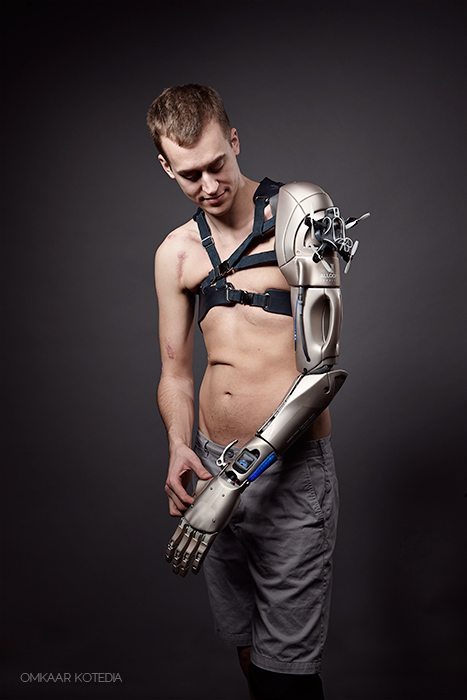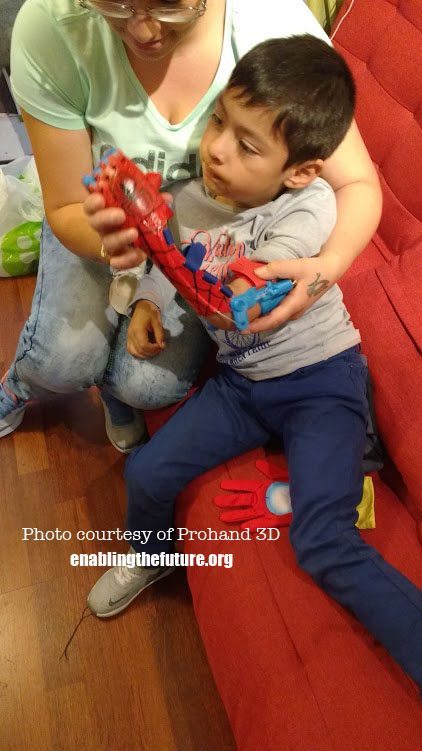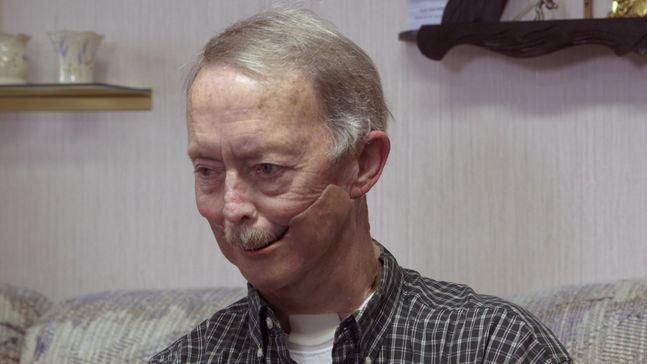3D printing prosthetics is changing the way those born with missing limbs or who have lost them due to accident, illness or war live their lives. The technology is in use today and brings life improving benefits to some of those least able to access traditional prosthetics. Furthermore, researchers are working on projects that will extend the opportunity to many others and also advance the field. These projects blend 3D printing, robotics and medicine and show how 3D printing can provide a unique solution to a real problem.
3D Printing Volunteers
One of the first projects to harness the potential of 3D printing was e-NABLING the future. e-NABLE are, “working to improve the accessibility to prosthetic hands without any drive for financial gain.” To accomplish this goal they have created an international network of volunteers who donate their 3D design skills, time and 3D printing capacity. The network endeavours to match volunteers with those in need of a 3D printed prosthetic. The growing community can access forums, designs and e-NABLE’s experience in this area. To date at least 1,800 3D printed hands have been delivered, although the actual number may be much greater as e-NABLE do not track hands delivered by those inspired by the project but working outside the network. Whether you have access to a 3D printer or not, you can volunteer to take part in the project and there is a guide on how to get involved on e-NABLE’s website.
Joel Gibbard, founder of Open Bionics, launched the Open Hand Project on Indiegogo with the aim of producing a $1000 (£630) 3D printed prosthetic hand. The campaign exceeded the funding target and raised a total of $57,152 (£43,593), Gibbard is using the money to further development of the low-cost 3D printed robotic hand and fund the work at Open Bionics. To this end, Gibbard has worked with people who have lost a hand such as Chef Liam Corbett. Corbett lost his hand to meningitis and helped Gibbard ensure the 3D design met with the needs of intended users. Publishing the Dextrus hand under an open source license was an important part of the project. “This really helps get these devices out to developing countries and places where import taxes might otherwise increase the cost of distribution,” said Gibbard on the campaign page.
The Phantom Limb Project
Open Bionics won the James Dyson Award in the UK and is now based at the UK’s largest robotics lab. From the base in Bristol, the enterprise recently created a prosthetic hand in partnership with video game publisher Konami.

The makers of Metal Gear Solid set up their Phantom Limb project to help gamers such as James Young who is also an amputee. Working with Sophie de Olivieira, from the Alternative Limb Project, the team created a 3D printed hand that Young can control using the muscles in his back.
A spokesperson for Open Bionics said, “The hand is a myoelectric prosthesis. This means EMG sensors read muscle activity beneath James’ skin. Depending on how James is squeezing his shoulder muscles, he call tell the hand to perform five different programmed actions including opening and closing the fingers, pointing, and using a tripod grip.”
3D printing is uniquely suited to making such customized objects as it eliminates the need for molds that would otherwise increase costs. While mass production of goods using technique such as injection-molding spreads the cost of molds over thousands of items, customized objects such as prosthetics are not economic to make in this manner. 3D printing allows for a combination of aesthetically pleasing and personalized design with life changing technology. For younger users of prosthetics the visual impact can be particularly significant. Projects such as the Phantom Limb and e-NABLE aim to reshape the way ‘disability’ is seen. Intriguing and personalized 3D printed prosthetics projects like these bring happiness to wearers such as 4 year old in Chile who received a Spiderman themed 3D printed arm from the e-NABLE network.

Extending the Reach of Prosthetics
Unfortunately, many of the countries where prosthetics are most in demand are also some of the poorest parts of the world. In the aftermath of war or natural disasters the resources to make even low cost prosthetics may be scarce. To overcome this barrier a team at Germany’s Friedrich-Alexander University Erlangen-Nürnberg (FAU) are investigating the use of recycled material for 3D printing. Dr. Christian Zagel launched the 3DPro initiative and hopes to 3D print prosthetics from items such as plastic cups. Dr. Zagel said in a press release, ‘We want to make sure that local doctors can work with the system and that they do not need special cameras or expensive 3D printers, trained engineers or orthopaedic specialists.” The project aims to produce 3D printed prosthetics by 2017.
The traditional procedure for making a prosthetic limb is uncomfortable and often involves multiple appointments for molding and measuring. When the prosthetic is to replace part of the face, then the process can become terrifying for some. For example, to create a jaw prosthetic a mold of the relevant area must first be created. This involves covering a patients face entirely with plaster. The patient can breathe only through a straw. Generally this is an unpleasant experience for most people, and for some it can induce a claustrophobic panic. Dr. Travis Bellicchi is a maxillofacial prosthetic specialist at the Indiana University School of Dentistry and working with Professor Zeb Wood, a lecturer at the School of Media Arts and Sciences, and student Cade Jacobs the team created a 3D printed jaw. The existing prosthetic jaw was excessively heavy and frequency refused to remain in place. 3D printing made the object lighter and the patient, Shirley Anderson, did not have to experience the troublesome molding procedure for a second time. Instead the team used the existing mold to create a 3D model. Dr. Travis Bellicchi said the project, “Used 3D printing to replace about 75 to 80% of the process in traditional prosthetic fabrication.”

Life-changing Innovation
Desktop 3D printing is occasionally, and certainly unjustly, accused of contributing little to the world beyond adding to a cluttered heap of tchotchkes. Projects such as these demonstrate that life-changing innovation is not the sole preserve of those with access to high-grade industrial printers. 3D printing removes barriers to innovation by allowing inventors to realize designs that might have previously existed only in their minds. As the projects in this article, and beyond, show this has an important place in the real world.



